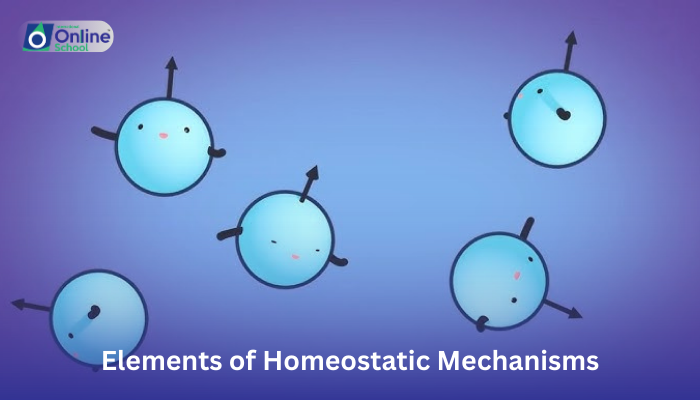
Learning Outcomes
By the end of this lesson, students will be able to:
i. Explain the concept of homeostasis and its importance in living organisms.
ii. Identify the three essential elements of homeostatic mechanisms: receptors, control center, and effectors.
iii. Describe the role of each element in maintaining a stable internal environment.
iv. Provide examples of how homeostatic mechanisms regulate various physiological processes.
Introduction
Living organisms, from simple bacteria to complex humans, face constant challenges in maintaining a stable internal environment despite external fluctuations. This ability to regulate the internal environment, ensuring optimal conditions for cellular processes, is known as homeostasis. Homeostatic mechanisms, the intricate systems that govern homeostasis, involve a coordinated interplay of three key elements: receptors, control centers, and effectors.
i. Sensing the Change: The Role of Receptors
Receptors are specialized sensory cells that detect changes in the internal environment. They act as messengers, monitoring various parameters such as temperature, pH, blood sugar levels, and oxygen concentrations. Receptors are located throughout the body, including in the skin, blood vessels, and internal organs.
ii. The Decision-Maker: The Control Center
The control center, often the brain or specialized regions within the nervous system, receives information from receptors and interprets it based on set points, the desired values for each physiological parameter. The control center analyzes the incoming data and determines the appropriate response to maintain homeostasis.
iii. Taking Action: The Effectors
Effectors are the muscles, glands, or other organs that carry out the instructions from the control center. They are the actuators of the homeostatic system, responding to the signals from the control center to bring the internal environment back to the desired set point. For instance, sweat glands act as effectors in regulating body temperature, releasing sweat to cool the body when it becomes too hot.
iv. Homeostasis in Action: Regulating Physiological Processes
Homeostatic mechanisms regulate a wide range of physiological processes, ensuring the optimal functioning of the body:
Body Temperature Regulation: The control center, located in the hypothalamus, maintains a stable body temperature around 37°C. When the body temperature rises, effectors such as sweat glands and blood vessels are activated to dissipate heat. Conversely, when the temperature drops, effectors like muscles generate heat through shivering.
Blood Sugar Regulation: The pancreas, acting as the control center, monitors blood glucose levels. If blood sugar rises, the pancreas releases insulin, an effector that promotes glucose uptake by cells, lowering blood sugar. Conversely, if blood sugar drops, the pancreas releases glucagon, an effector that stimulates glucose release from the liver, raising blood sugar levels.
Blood Pressure Regulation: The cardiovascular system, including the heart and blood vessels, maintains blood pressure within a healthy range. If blood pressure rises, effectors such as blood vessels dilate to accommodate increased blood flow, lowering pressure. Conversely, if blood pressure drops, blood vessels constrict, and the heart rate increases to maintain adequate blood flow.
Homeostatic mechanisms, with their intricate interplay of receptors, control centers, and effectors, are the foundation of life's resilience. By maintaining a stable internal environment, these mechanisms enable organisms to adapt to changing conditions and thrive in diverse environments. Understanding the principles of homeostasis and its practical applications in regulating various physiological processes is essential for appreciating the remarkable complexity and adaptability of living systems.